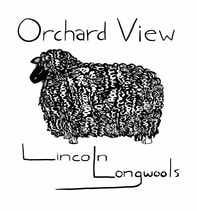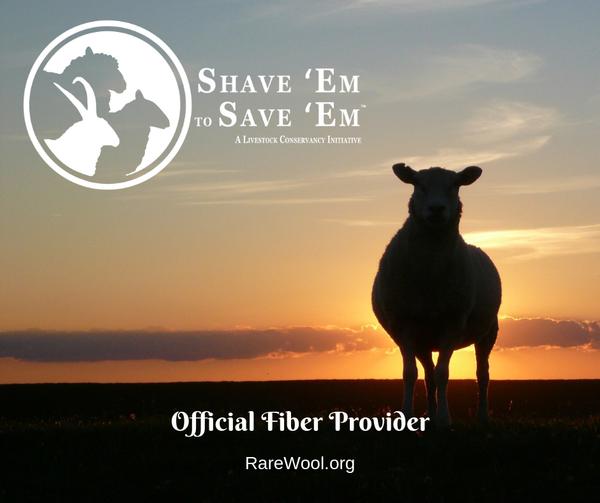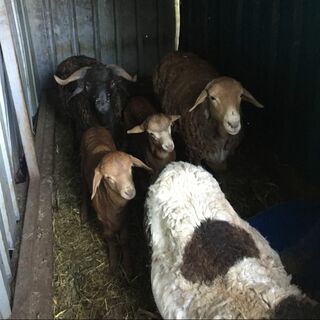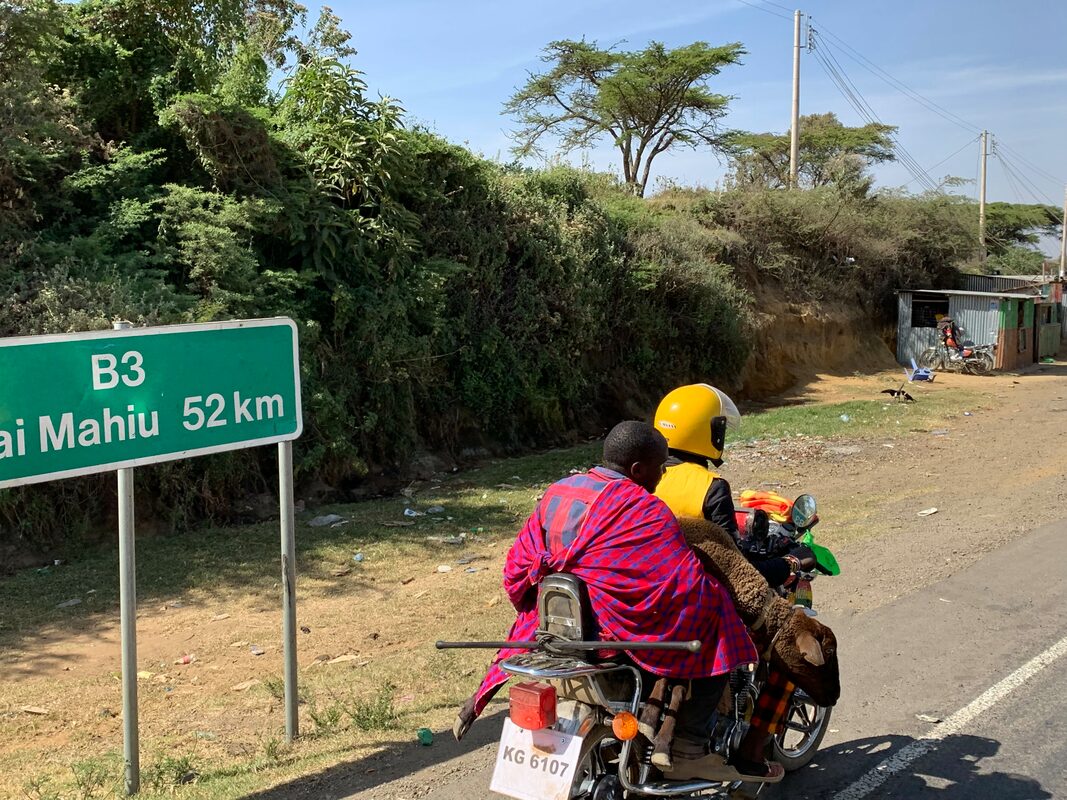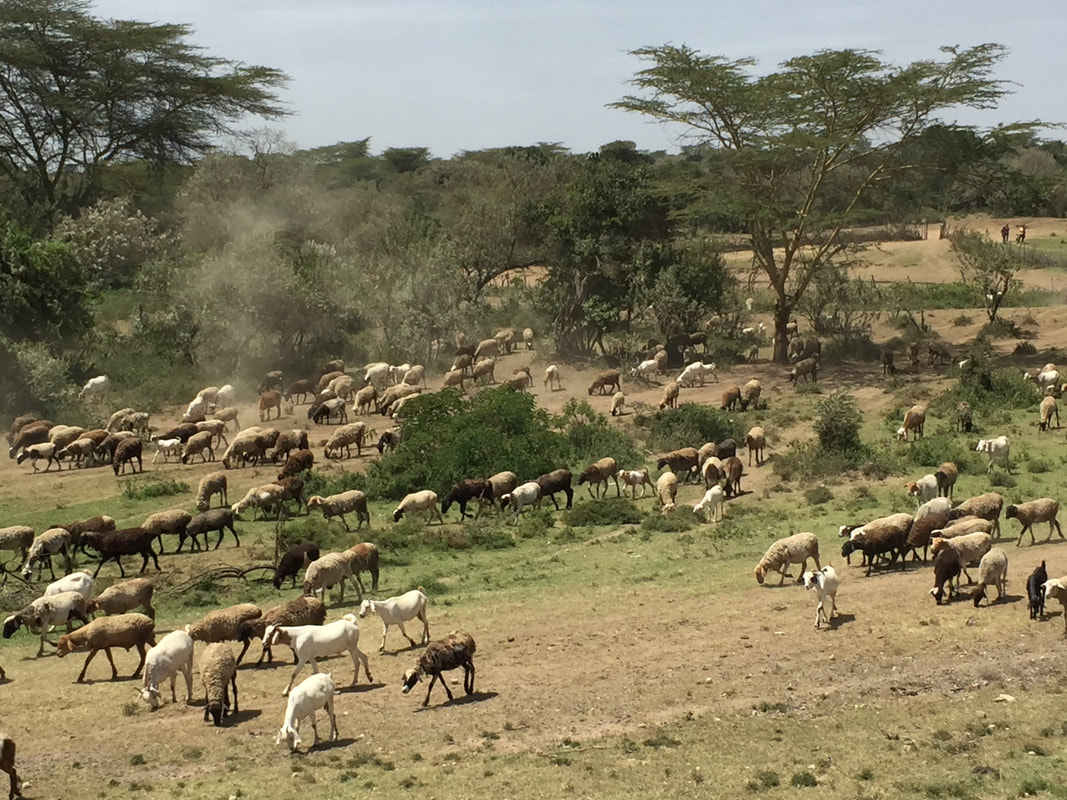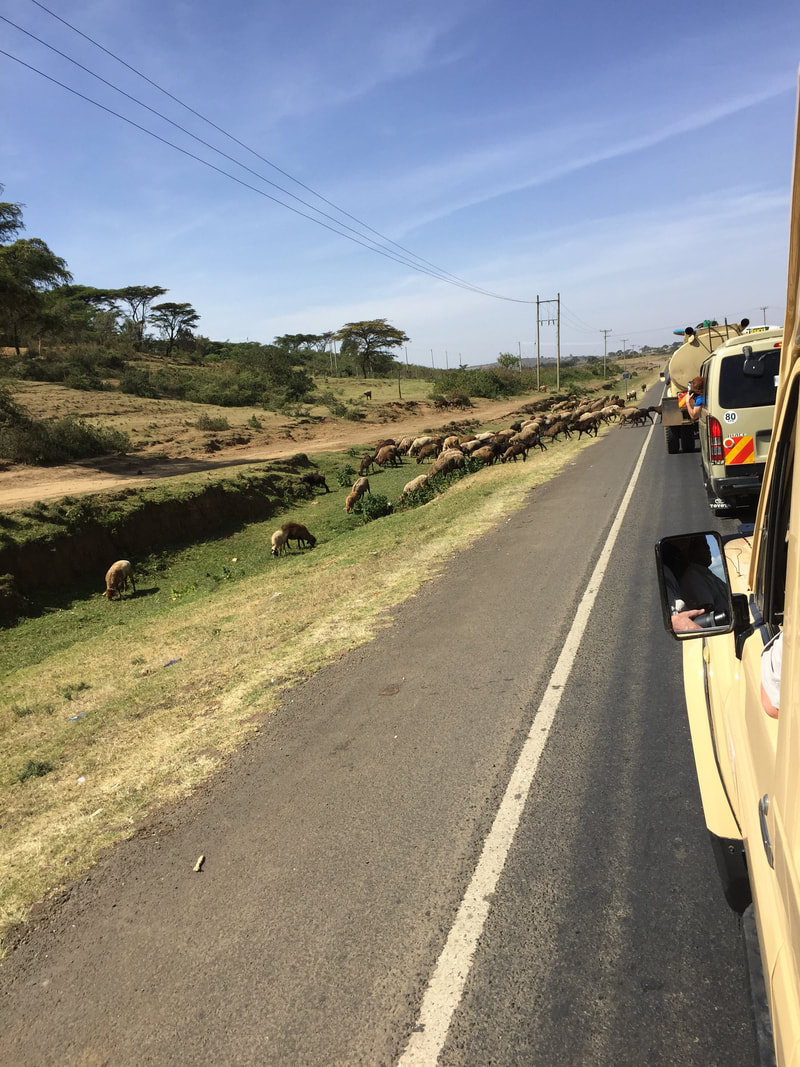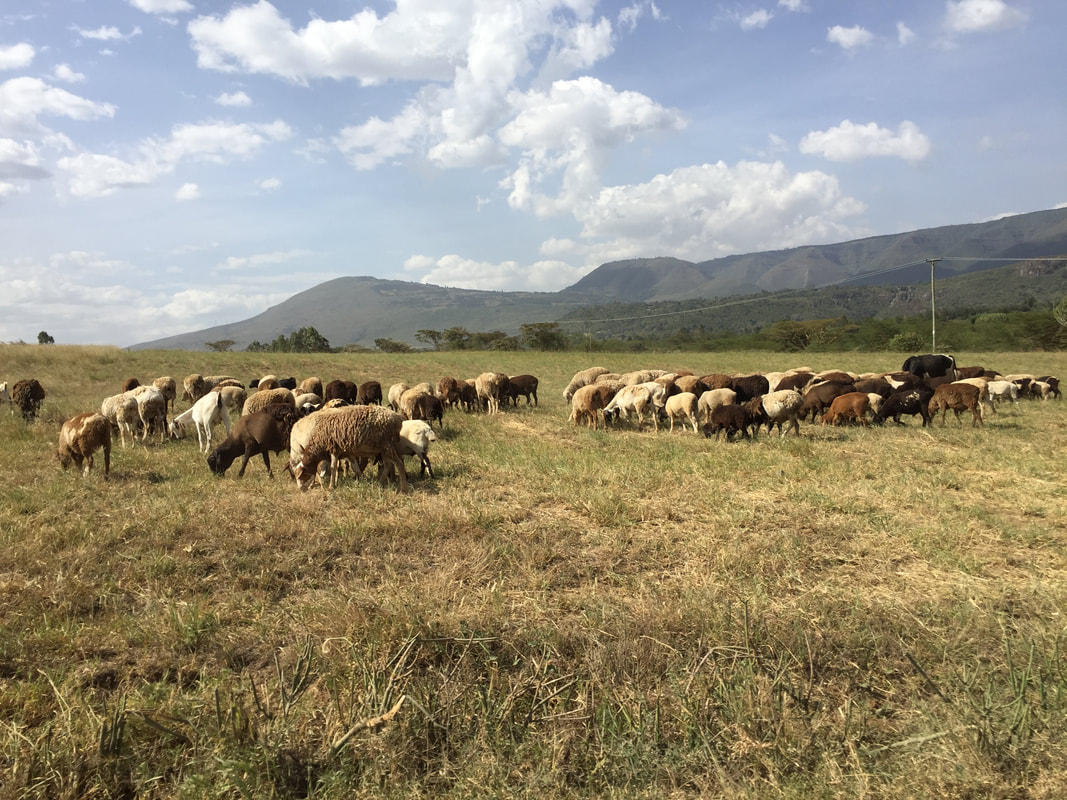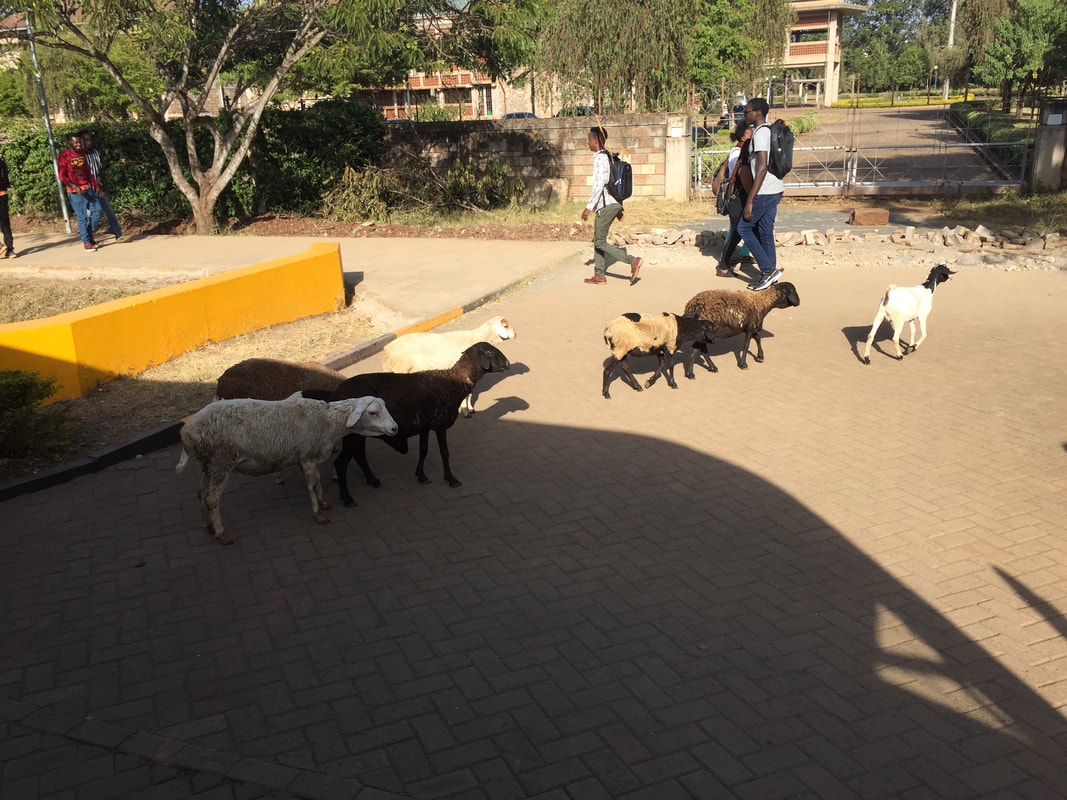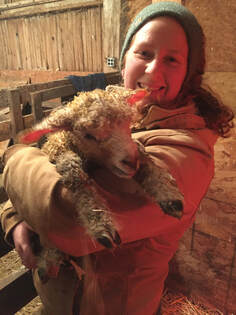 First lamb born, a huge single ram lamb. First lamb born, a huge single ram lamb. 40 lambs!!!!!!! At no point when I started raising sheep as a 12 year old, did I ever think I would reach the point where lambing season concluded with 40 LAMBS, but here we are. This year's lambing season seemed to drag out longer than usual (starting January 9th and ending yesterday, April 9th), even though it started a few days late and I was gone for several weeks in the middle of it. It's amazing how much the weather in July and August seem to dictate how the lambing season goes. Here are a few stats of this year's lambs: 24 Ewe lambs 16 Ram lambs 31 Natural colored Lincolns 5 White Lincolns 4 Crosses For once, it seems like the ewe:ram ration is in my favor! We had the least number of singles in a few years, which is fantastic, and even had two sets of triplets. And only one bottle lamb, which makes me quite happy. 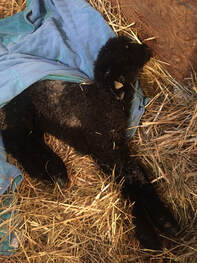 Lamb with signs of polio- thankfully he fully recovered! Lamb with signs of polio- thankfully he fully recovered! No lambing season ends without problems, and this year we did lose a couple lambs and one ewe, all to issues that likely couldn't have been prevented. We did have a miracle lamb this year that got polio and was touch-and-go for about 48 hours and after aggressive Vitamin B supplements, has recovered fully. After 15 years of lambing, I had no idea until this year that polio caused by vitamin B deficiency is even something that can happen to lambs! We ultrasounded our ewes for the first time in late November and only had one come up open. But, come mid-February, it became very clear that was indeed NOT open. She rounded out our lambing season with a vaginal prolapse and lambing several days after her last possible due date (the rams came out on shearing day, 11/5). I'm always amazed at how I continue to learn annually and encounter new problems. You'd think that after 15 years and nearly 300 lambs, we would've seen it all, but that never seems to be the case! So far, the lambs are growing well and I look forward to many going to their new homes over the next month. We still have lambs for sale if you are interested! :D
1 Comment
Many of you know how passionate I am about preserving rare breeds of sheep, hence part of my decision to raise Lincoln Longwools. The Livestock Conservancy is an amazing organization dedicated to preserving endangered livestock breeds from extinction. The Lincoln Longwool is listed as "threatened" by this organization.
The Livestock Conservancy currently has an awesome initiative to encourage fiber artists to use wool from the 22 sheep breeds on the Conservation Priority List. The Shave 'Em to Save 'Em campaign began in January and will run for three years. The campaign encourages fiber artists to buy and use the fiber from breeds on its Conservation Priority list in a project. This can include spinning, knitting, felting or other fiber arts. When you purchase wool from a producer who is registered with the campaign, you will receive a sticker to put into your "passport". You earn prizes for using 5, 10 or 15 breeds, and more importantly, you are helping to increase the commercial and financial viability of raising rare and heritage breeds. To find the rules in the files section, along with announcements and discussion, visit their Facebook Page, Ravelry Page, or visit www.rarewool.org! Here's how you can participate: 1) Sign up as a Fiber Artist at www.rarewool.org 2) Buy wool from rare breed Fiber Providers and get a sticker in their “passport" 3) Share pictures of their projects on Facebook and/or Ravelry 4) Earn great prizes! I am registered as a fiber producer with the campaign, already have my stickers for you and am ready to ship you gorgeous rare breed wool! I hope all of your fiber artists out there consider supporting rare breeds and participate in this great opportunity. 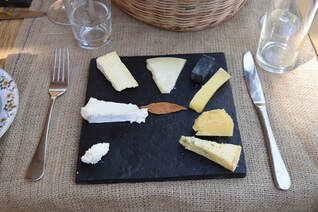 Cheese tasting at Brown's Cheese. The Red Maasai cheese is the black one in the top right. Cheese tasting at Brown's Cheese. The Red Maasai cheese is the black one in the top right. Last month, I had the opportunity to visit Kenya for ten days, as part of an agricultural leadership program called LEAD New York. This two year program ends with an international capstone trip to learn about agriculture and development in a developing country. While I could do a whole series on this trip, I wanted to highlight something I learned about and saw: the Red Maasai breed of sheep. First of all, I don't think I have ever seen so many cattle, sheep and goats in my life! They are everywhere: along the highway, in the medians, grazing everywhere you look whether you are in Nairobi or out in rural areas! As I am not nearly interested in cattle and goats as I am sheep, I wanted to share a little about this interesting heritage breed. The first time I heard of the Red Maasai sheep was during our second day, on a visit to Brown's Cheese. Delia and Andrew Stirling (both Cornell alumni!) are one of the only artisan cheese makers in East Africa. They source much of their milk from smallholder farms who have, on average, 2 cows and only a handful of sheep or goats. The are both passionate about working with NGOs to conduct research on how locals can improve the nutritional quality of their milk. The majority of these farmers live off of what they cannot sell, so helping to improve fat and protein content of the milk is beneficial for their families as well as cheese quality. In addition to working projects related to cattle nutrition, they are also interested in preserving the Red Maasai breed of sheep. The Red Maasai traditionally belong to the Maasai people, one of the largest tribes in Kenya and East Africa. But, they are currently on the verge of extinction, as they are routinely bred with Dorper sheep for better growth and conditioning. They are hoping that creating a cheese with Red Maasai milk will help promote this traditional breed. The cheese is inspired by mursik, a traditional Kenyan yogurt that is smoked, fermented, and preserved with charcoal. We had the opportunity to try the cheese. Similar in style to a pecorino, it is a unique blackish color from ash (made from banana leaves) and has a unique flavor as well. As much as I wanted to like it, it wasn't my favorite cheese I tried that day, but I love the mission behind it. Brown's has several Red Maasai sheep that live at their farm that they have for demonstration. I highly recommend the trip out to their farm for a lunch if you ever find yourself in the Nairobi area! After this day, I began to notice Red Maasai sheep and crosses everywhere. They are fatty tailed, hair breed sheep with a very distinctive and beautiful red color. They are known for their hardiness in arid conditions and have great internal parasite resistance. They are called Maasai sheep because they are traditionally raised by the Maasai people of East Africa who are pastoralists. It is a traditional belief that the Rain God entrusted livestock to the Maasai when the earth and the sky split, and according to legend the Red Maasai sheep was the first animal kept by the Maasai. Dorper sheep were introduced in the 1970's, so most of the sheep now are crosses. But, just like any other heritage breed, preserving the Red Maasai sheep is important for genetic diversity. Here is a collection of Red Maasai sheep photos of my trip. Enjoy! |
AuthorEmmaline Long, main owner of Orchard View Farm, has a passion for Lincoln sheep and loves educating others about her breed and farm, She currently serves as the Vice President of the National Lincoln Breeders Association. Archives
October 2020
Categories
All
|
Orchard View Lincoln Longwools7617 S. Lake Rd., Bergen NY 14416 |
Contact UsStay Up-To-DateFollow our blog!
|
